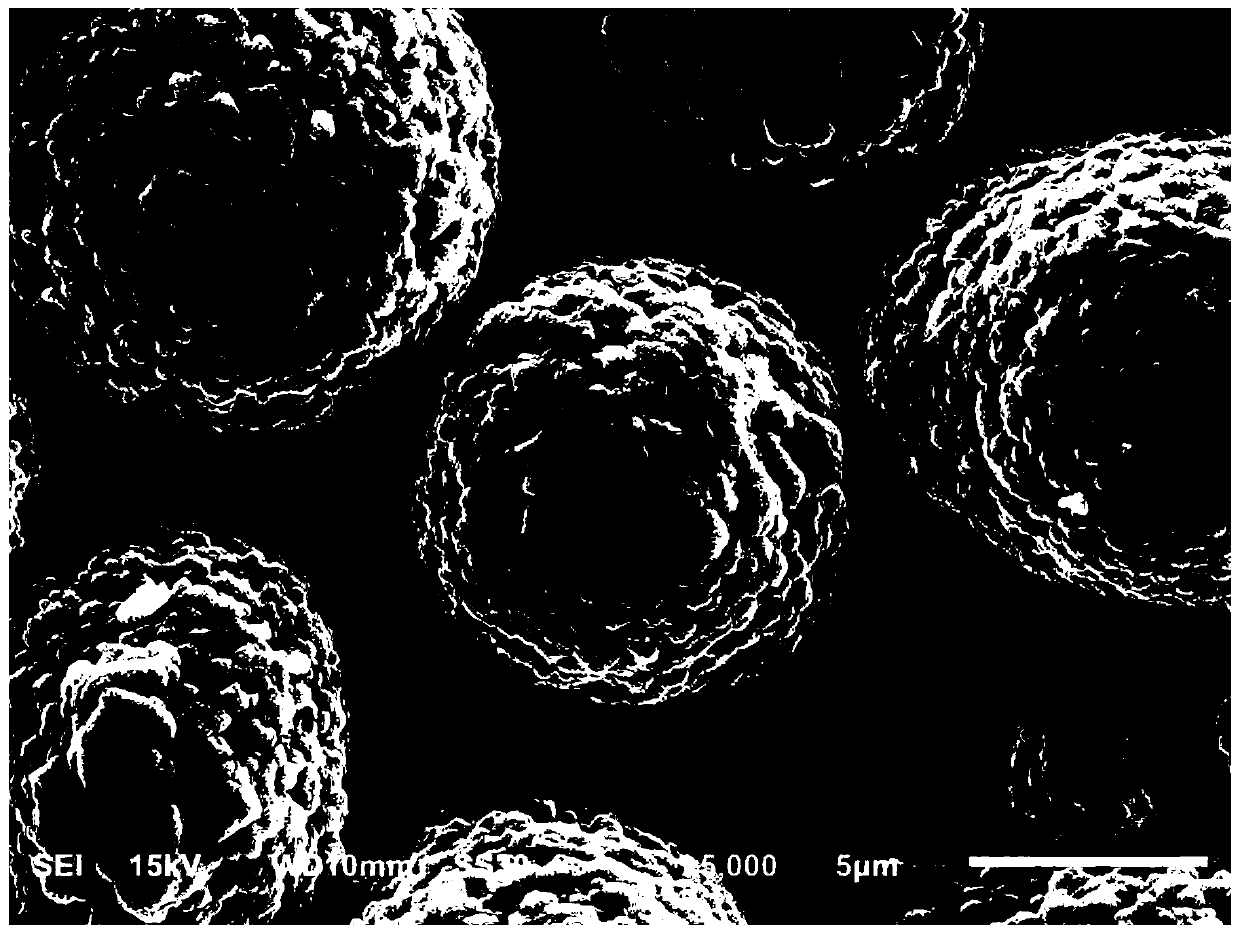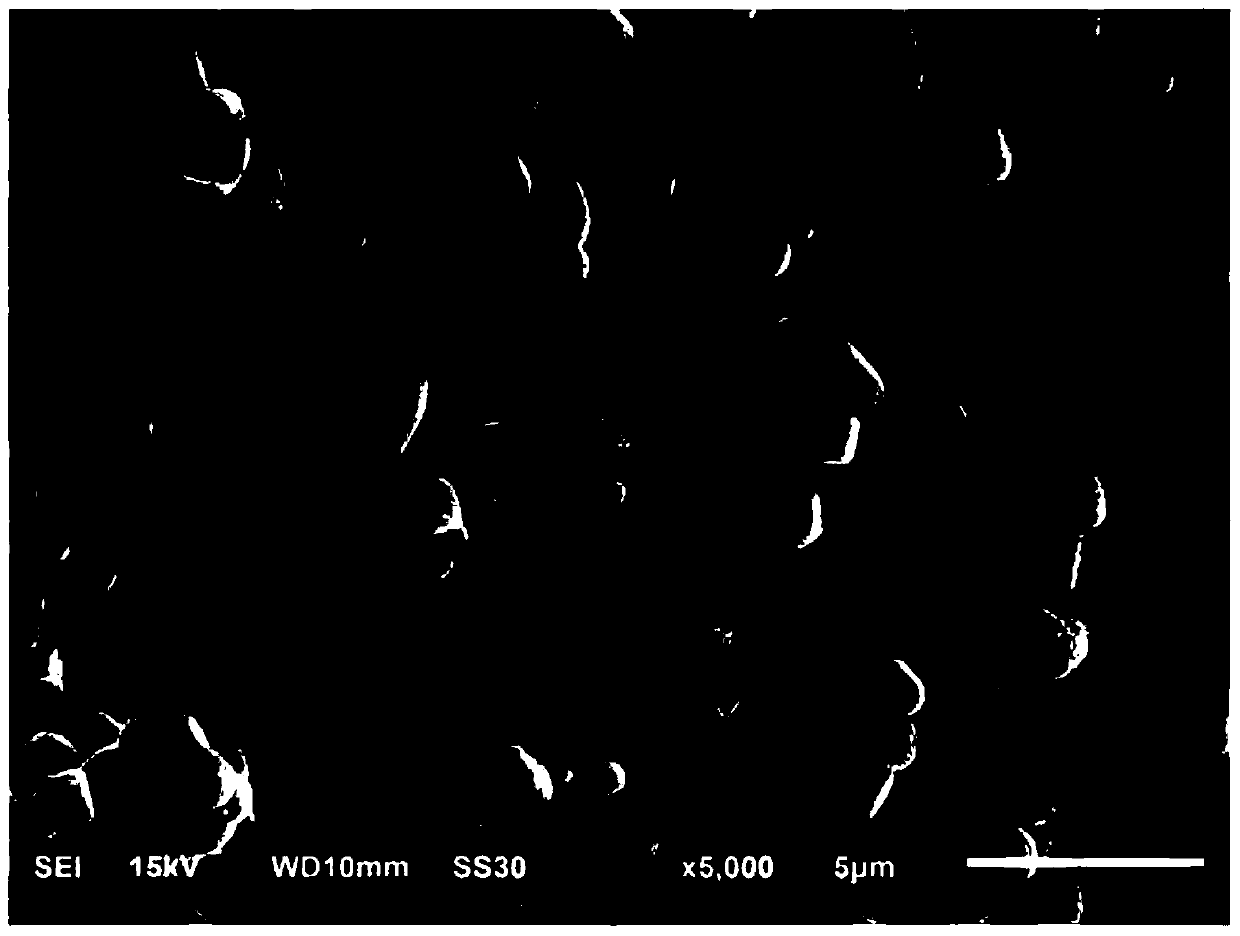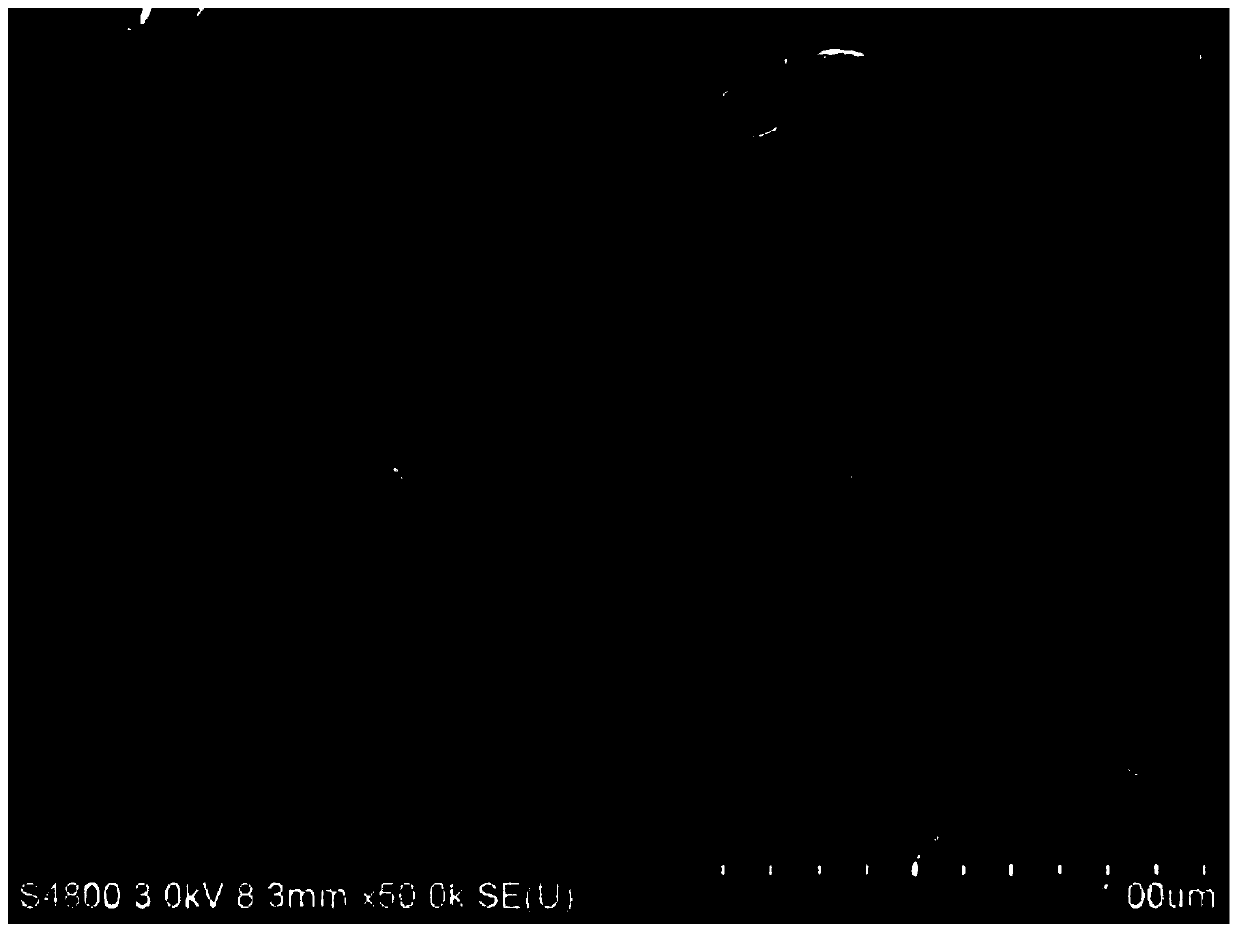Composite positive electrode material, positive electrode sheet, preparation method of positive electrode sheet, and lithium ion battery
A composite cathode material, lithium-ion battery technology, applied in battery electrodes, secondary batteries, electrode manufacturing and other directions, can solve the problems of poor cell safety performance, easy oxygen release, poor thermal stability of ternary materials, etc., to achieve high safety effect of high onset exothermic temperature
- Summary
- Abstract
- Description
- Claims
- Application Information
AI Technical Summary
Problems solved by technology
Method used
Image
Examples
Embodiment 1
[0057] This embodiment provides a composite positive electrode material suitable for lithium-ion batteries, which is mainly composed of three types of materials: A, B, and C.
[0058] Among them, the A material is a nickel-cobalt-lithium composite oxide (referred to as the first nickel-cobalt-lithium composite oxide), and its molecular formula is Li 1+x1 Ni 1-y1-z1 co y1 N z1 o 2 , wherein N is at least one of Mn and Al, -0.05<x1<0.1, y1=2Z, 0.10≤y1+z1≤0.14. Material A is a spherical aggregate of secondary particles formed by agglomeration of primary particles. The particle size of the primary particles is 200-400nm, and the crystal structure of the primary particles is layered. The particle size distribution of material A is narrow, the minimum particle size Dmin_A of material A is greater than 5 μm, and the average particle size D50 is 10-12 μm;
[0059] B material is another nickel-cobalt-lithium composite oxide (recorded as the second nickel-cobalt-lithium composite ...
Embodiment 1A
[0078] A0 material, molecular formula is Li 0.99 Ni 0.88 co 0.08 mn 0.04 o 2 (ie molecular formula Li 1+x1 Ni 1-y1-z1 co y1 N z1 o 2 Among them, x1=0.01, y1=0.08, z1=0.04), purchased from Thornton New Energy Technology Co., Ltd., is a secondary particle spherical aggregate formed by primary particles of 200-400nm, and the minimum particle size of the A0 material is D min The value is 0.4 μm, and the average particle diameter D50 of the A0 material in this experimental example is 11.2 μm, which has a wide particle size distribution. figure 1 It is the scanning electron microscope picture of the A0 material of this embodiment.
[0079] Material A0 passes through a powder classifier and is classified to obtain material A, and the minimum particle size of material A obtained is D min The value is 6.2 μm, which further narrows the particle size distribution of material A obtained by classification compared with material A0. The average particle diameter D50 of material A ...
Embodiment 2A
[0088] Compared with Example 1A, the composite positive electrode material is composed of A, B and C, the mass ratio of A:B:C is 74.16%:24.09%:1.75%, and the rest are the same.
PUM
| Property | Measurement | Unit |
|---|---|---|
| particle diameter | aaaaa | aaaaa |
| particle size | aaaaa | aaaaa |
| particle diameter | aaaaa | aaaaa |
Abstract
Description
Claims
Application Information
 Login to View More
Login to View More - R&D
- Intellectual Property
- Life Sciences
- Materials
- Tech Scout
- Unparalleled Data Quality
- Higher Quality Content
- 60% Fewer Hallucinations
Browse by: Latest US Patents, China's latest patents, Technical Efficacy Thesaurus, Application Domain, Technology Topic, Popular Technical Reports.
© 2025 PatSnap. All rights reserved.Legal|Privacy policy|Modern Slavery Act Transparency Statement|Sitemap|About US| Contact US: help@patsnap.com



